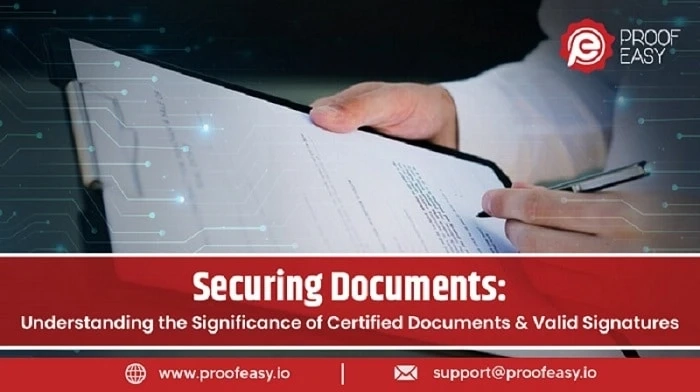The way we interact with our documents today in the digital realm has taken a quantum leap. The traditional act to certify documents, once marked by wax seals and authoritative signatures, now stands at the crossroads of history and innovation.
Meanwhile, the advent of e-signatures has transformed the way we bind agreements and give our digital nods of approval. As the physical copies of documents are taking a set back, the new way of certifying essential documents and verifying e-signatures are making a wave.
Let us explore the immense significance these activities have in today’s digital landscape.
The Evolution of Certification
Certifying documents is not a new concept; it has deep historical roots. Traditionally, certifications were physical seals or signatures provided by authorized individuals or entities.
It is done for verifying the authenticity of a document. This process instilled trust and confidence in the content and origin of the information.
Fast forward to the digital age, and the game has changed. Certifying documents has evolved from the tangible to the intangible. Digital signatures, cryptographic hash functions, and other advanced techniques have taken the center stage.
The goal remains the same – to ensure the integrity and authenticity of information, but the means have become more sophisticated.
Beyond the Paper Trail: E-Signatures in Focus
Enter the era of electronic signatures, or more commonly known as e-signatures. Gone are the days when signing a document meant putting pen to paper. Now, a simple click or a swipe on a touchscreen can seal the deal.
But with this transition comes a crucial question: How can we be sure that these digital signatures are as secure and legally binding as their physical counterparts?
Unveiling the Layers of E-Signature Validation
The validation of e-signatures is a multi-faceted process, involving various layers of security. Encryption algorithms, secure key management, and audit trails are just a few elements that contribute to the robustness of e-signatures.
Understanding these layers is essential to grasp the significance of validating e-signatures in the digital landscape.
- Encryption Algorithms: At the heart of every secure e-signature is a robust encryption algorithm. These algorithms ensure that the information is encoded in a way that is practically impossible to decipher without the corresponding decryption key. This adds a layer of security that surpasses the capabilities of traditional paper signatures. Many online certificate maker services make this element a standard.
- Secure Key Management: The strength of an e-signature lies in the security of its key. Just as a physical signature can be forged, digital signatures are susceptible to unauthorized use if the key is compromised. Effective key management practices, including regular updates and secure storage, are imperative to fortify the digital seal and maintain the trustworthiness of e-signatures.
- Audit Trails: In the digital realm, every action leaves a trace. Audit trails in e-signatures act as a chronological record of the signing process. They document who signed the document, when it was signed, and any other relevant details. This not only enhances transparency but also serves as a valuable tool in legal proceedings, if required.
The Future of Certification: Embracing Innovation
As we continue to delve deeper into the digital age, the landscape of document certification and e-signatures is bound to evolve further. Blockchain technology, biometric authentication, and artificial intelligence are among the innovative forces reshaping the certification landscape.
- Blockchain: Blockchain, the technology behind cryptocurrencies, is making waves in the realm of certification. Its decentralized and tamper-resistant nature ensures that once a document is certified on the blockchain, it becomes an immutable record.
- Biometric Authentication: Biometric authentication, such as fingerprints and facial recognition, is taking center stage in validating identities. Incorporating biometrics into e-signatures makes the process extra robust with increased personalization and security. It ensures that the person signing the document is who they claim to be.
- Artificial Intelligence: Artificial intelligence is streamlining the certification process by automating document verification and validation. Machine learning algorithms can analyze patterns, detect anomalies, and ensure that a document meets the required standards for certification. This not only enhances efficiency but also reduces the margin for human error.
Conclusion
In the grand tapestry of the digital age, certifying documents and validating e-signatures emerge as crucial threads. They weave a narrative of trust, security, and efficiency, shaping the way we conduct transactions and manage information.
As we embark on this digital odyssey, embracing the significance of certifications and e-signatures is not just a choice but a necessity. It\'s a journey into a future where the stroke of a pen is replaced by the click of a mouse, and the authenticity of information is safeguarded by the algorithms of encryption.
If you’re interested in exploring a more secure and seamless way to certify documents then check out ProofEasy. This pioneering platform uses their patented blockchain technology to make certification protected, tamper-proof and seamless.
You can visit their website to learn more about what they offer.



